Organic Evolution Exam 2
1/74
Name | Mastery | Learn | Test | Matching | Spaced |
|---|
No study sessions yet.
75 Terms
Epigenetics
a channel of inheritance that is not coded in genetic sequences and is derived from modification of histones and non-coding RNA regulation and methylation of DNA.
DNA methylation
adding a methyl group to DNA bases, altering expression
Histone modification
the modification of a variety of amino acids within histones, producing complex influences on gene expression.
Non-coding RNA regulation
several expressed RNAs (like non-coding RNAs and small RNAs) that modify gene expression in a variety of ways, also heritable.
Methylation in agouti mice
Agouti gene in mice is inhibited by the presence of transposons, resulting in agouti mice (fat/yellow). When transposon bases are methylated, the inhibition by the transposons is fixed, resulting in normal mice.
Arabidopsis experiment
two hybrid Arabidopsis plants are crossed, one mutant parent with a methylation gene knocked out; 500 hybrid lines were created with identical genomes but different methylation patterns, resulting in differences in a wide variety of differences in flowering time and plant height.
Epigenetic defense induction in plants
a hormonal defense induction caused by herbivory can express RNAs and modify gene expression by turning on defensive genes, this expression of RNA can be passed on to offspring.
Exosomes
extracellular vesicles that may facilitate soma-to-germline transmission of RNA from tumor cells to sex cells, potentially crossing the Weismann Barrier.
Social learning
a non-genetic inheritance system, passing on traditions (phenomena that is shared by a community) within a culture (totality of traditions).
Social learning in humans
Mesoamericans developed the tradition of soaking corn in lime (nixtamalization), which separates niacin from the tissue. Europeans who skipped the nixtamalization step developed pellagra. Cultural tradition of drinking cow milk may have interacted positively with the evolution of lactase persistence.
Social learning in monkeys
individuals learned to associate bitter-tasting corn with associated color and avoided that color corn even when it was made palatable. Color aversion was passed down to baby monkeys who never had corn before. Migrants to groups who had opposite color aversion immediately took up the color choice of their new group.
Recapitulation theory
Haeckel’s theory that development stages recapitulate adult evolutionary stages.
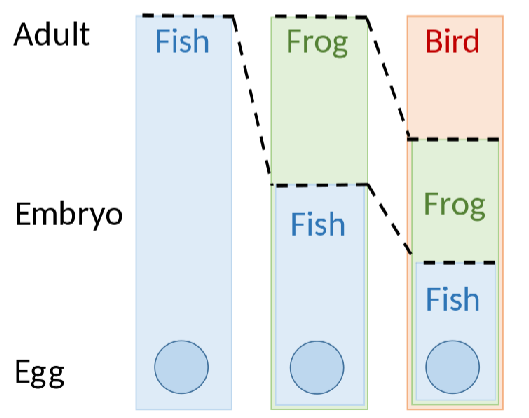
Von Baer’s Law (Law of Development)
Von Baer’s theory against Recapitulation: embryos develop from a uniform and noncomplex structure into an increasingly complicated and diverse organism.
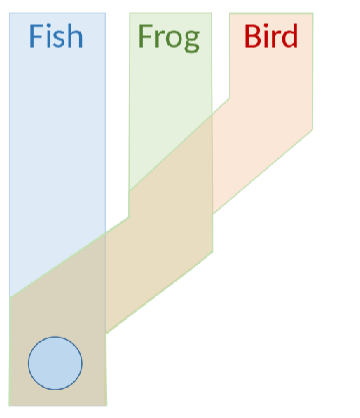
Atavism
return of ancestral trait.
Vestigial structures
ancestral structures that serve no purpose in derived organism
Heterochrony
difference in timing of development leads to a different phenotype
Hox genes
genes that control the body plan of an embryo along the head-tail axis in animals; crucial for development and determining the identity of body segments.
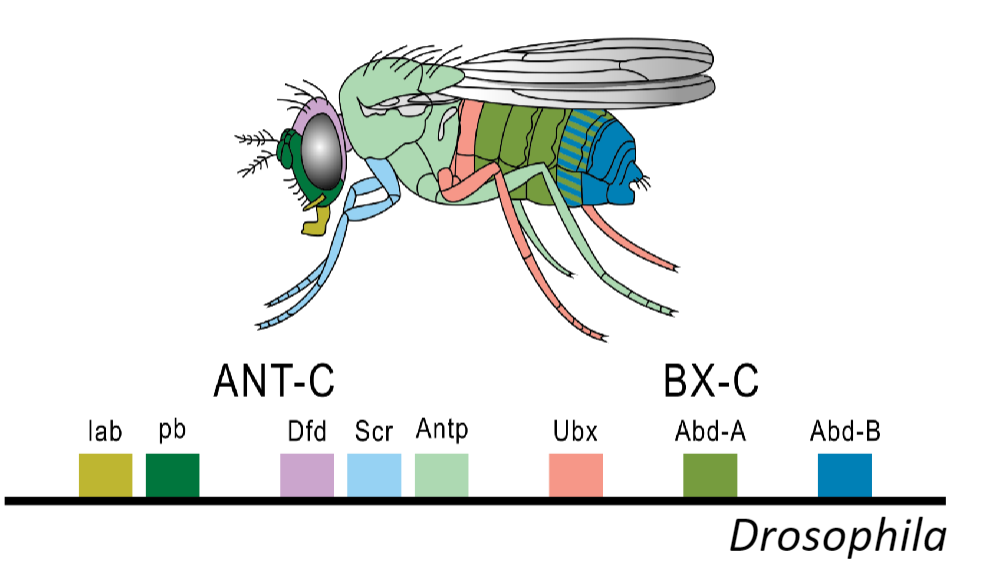
Bithorax mutation
a mutant fruit fly phenotype with a double thorax, caused by a mutation in the Ubx gene that transforms the third thoracic segment into a duplicate of the second thoracic segment.
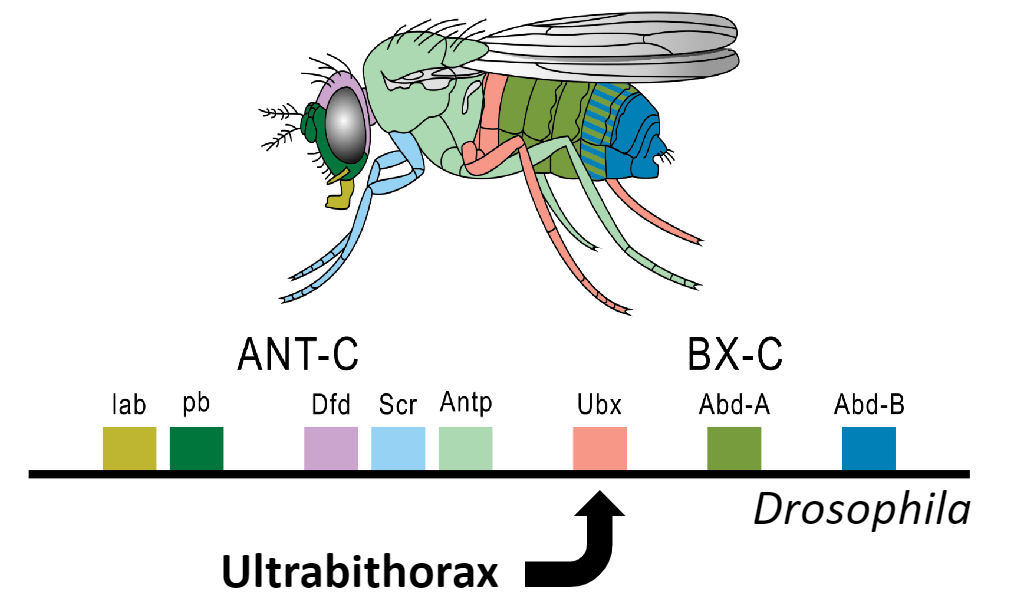
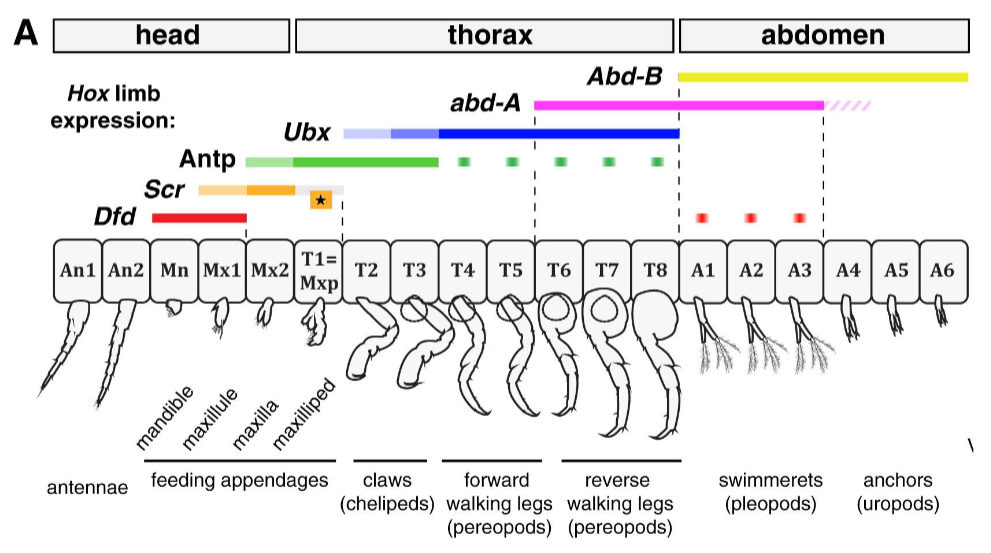
What alternation would change the reverse walking legs at T6-T8 into swimmerets?
express Abd-B in T6-T9.
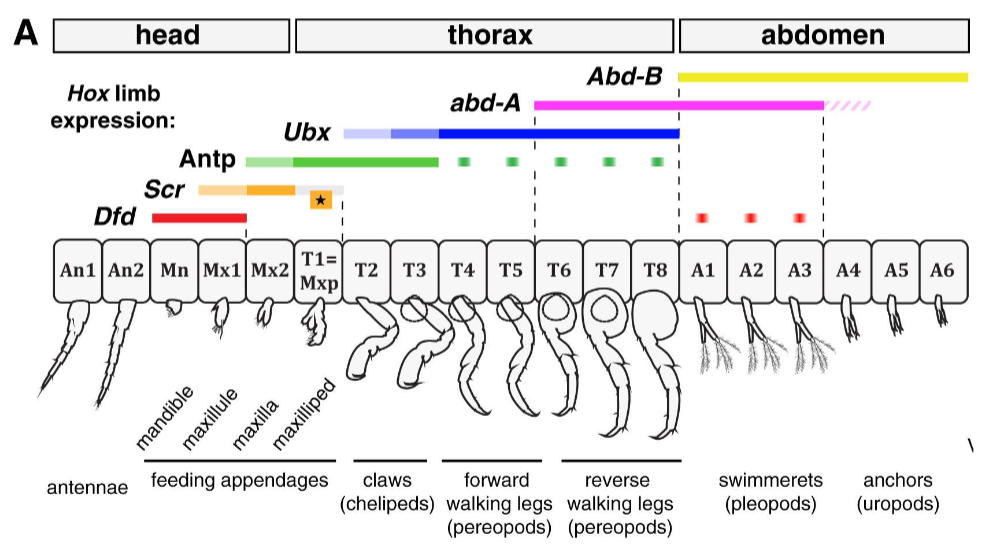
What alternation would change the swimmerets at A3 into anchors?
remove abd-A in A3.
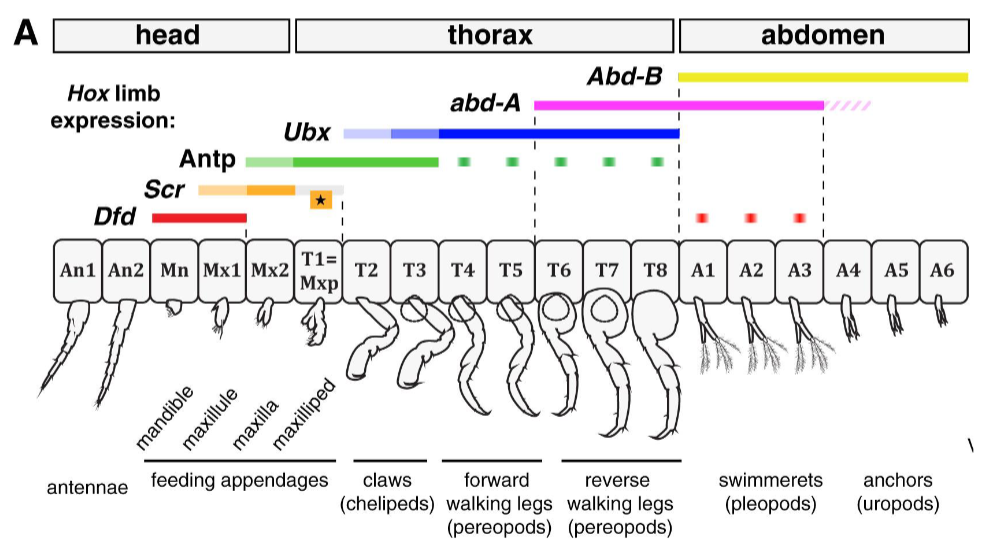
What alternation would change the swimmerets into reverse walking legs?
remove Abd-B in segments A1-A3.
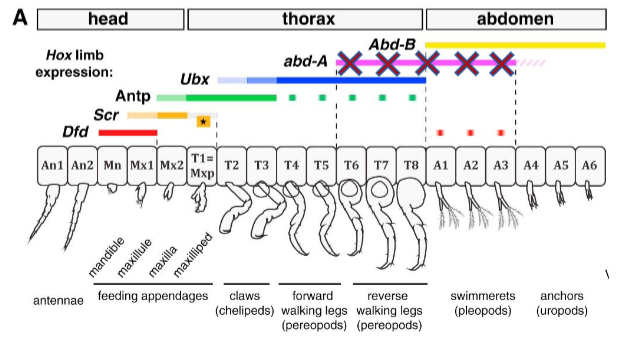
What is the result of abd-A knockout?
No rear legs or pleopods (abd-A dominates Ubx and interacts with Abd-B).
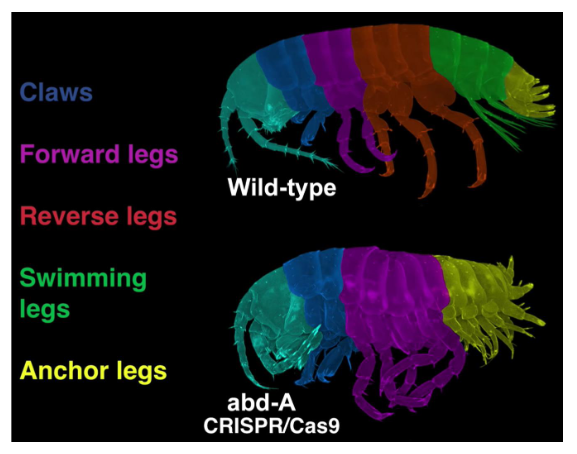

What is the result of Abd-B knockout?
Ubx continues to the posterior (Abd-B interacts with abd-A and inhibits Ubx).
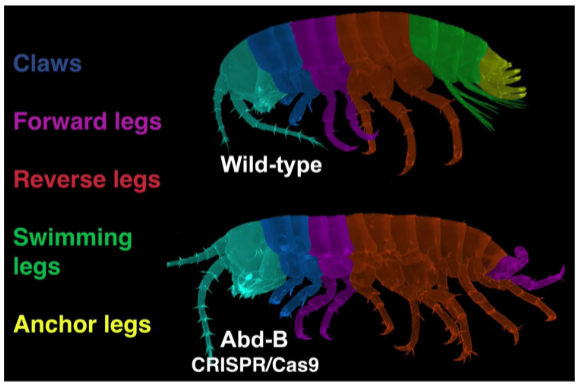
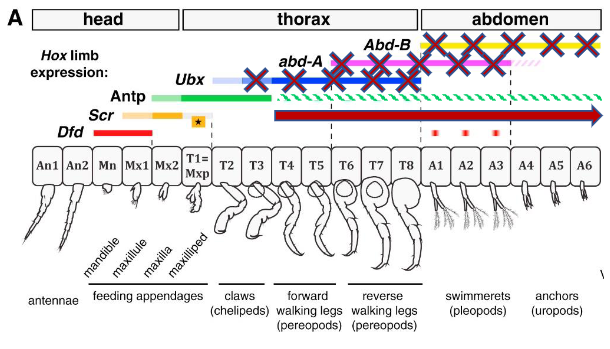
What is the result of Ubx, abd-A, and Abd-B knockout?
Antp is expressed in all posterior regions (all inhibit Antp).
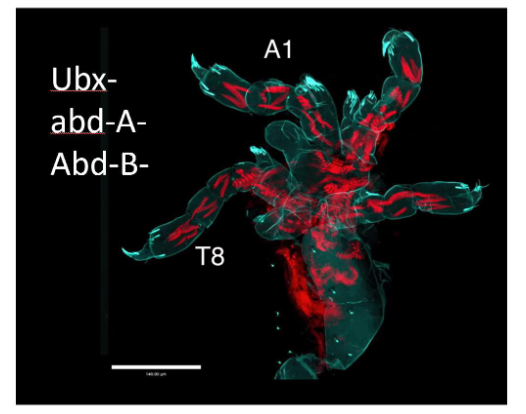
Posterior Hox gene hierarchy in amphipods
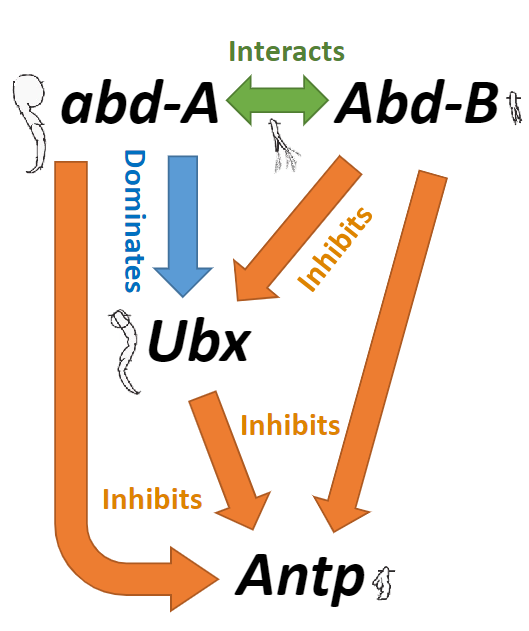
Pax6
Hox gene controlling eye development in flies, mice, and humans (and others).
Pleiotropy
one gene that influences multiple traits, one whose mutation could result in catastrophic changes.
Dark matter of the genome
99% of the human genome that does not encode functional proteins.
Promoter
DNA element just upstream of the coding region of a gene that binds transcription factors.
Enhancer
a genetic switch that may be located upstream of the gene or far away from the gene.
Yellow
gene that encodes dark pigmentation in Drosophila flies.
Ancestral pattern of the Yellow gene
low expression of Yellow gene in wings, high expression of Yellow gene in abdomen.

Evolution of wing spots
gain of a new binding site in the wing-specific enhancer of the Yellow gene.
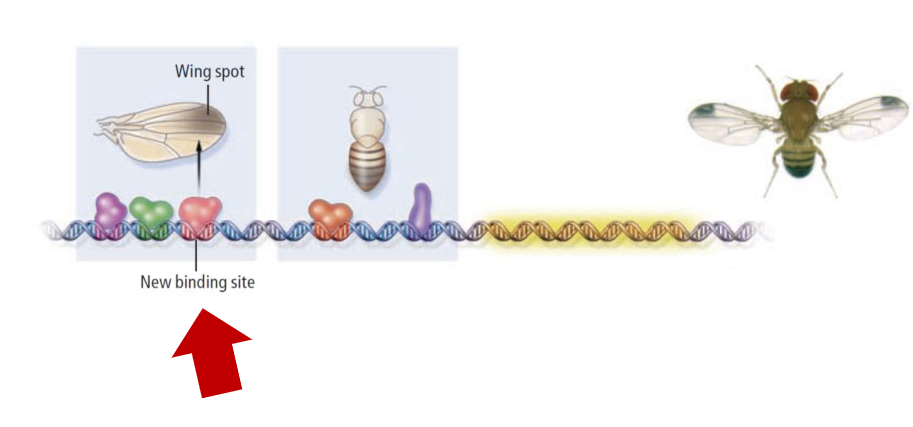
Evolution of no abdomen bands
loss of a binding site in the abdomen specific enhancer of the Yellow gene.
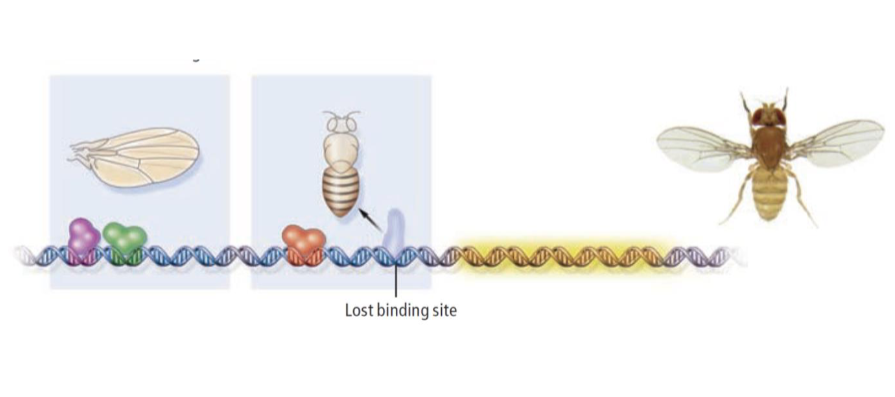
Pitx1
gene that encodes the development of pelvic spines.
Ancestral pattern of Pitx1
high expression of Pitx1 gene in pelvis leads to evolution of pelvic spines.
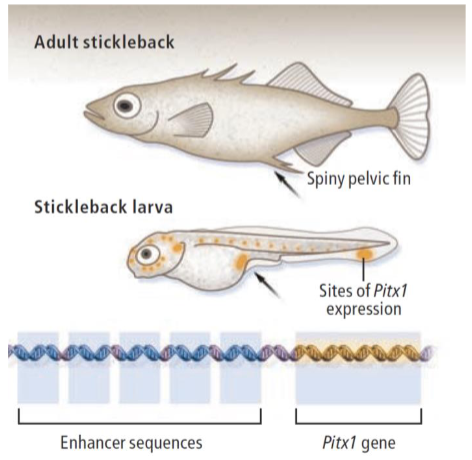
Mutant pattern of Pitx1
low expression of Pitx1 gene in pelvis caused by mutation in the pelvic specific enhancer leads to loss of pelvic spines.
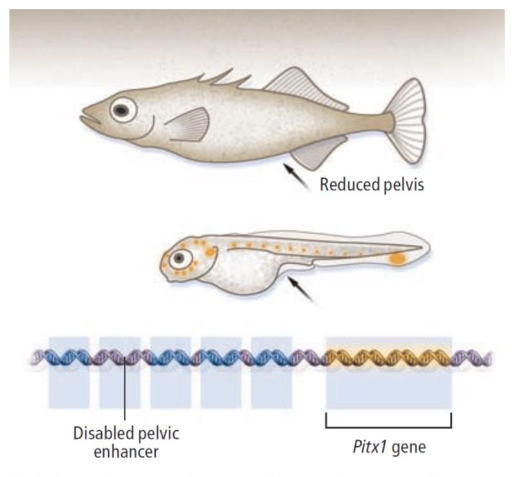
Adaptive pressures on spines
In deep waters, there are many predators that are deterred by spines on fish (high value of spines)
In shallow waters, there are fewer predators (low value of spines) but some insect predators that use the spines to catch fish (high cost of spines)
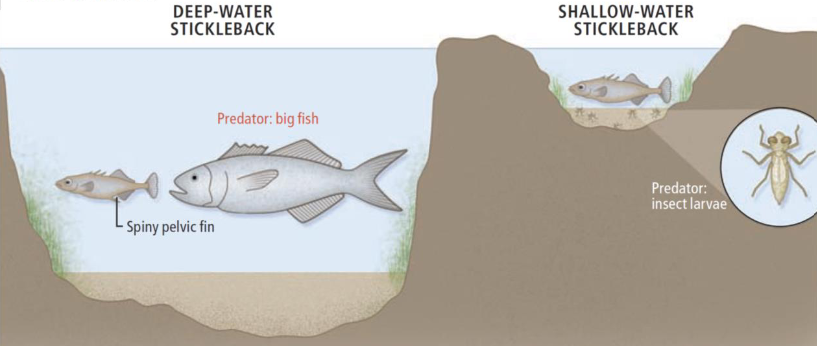
Epistasis
when the expression of one gene is influenced by the presence or absence of alleles at another gene locus.
Mito-nuclear compatibility
compatibility between the mitochondrial and nuclear genomes that each code for genes, and sometimes even different parts of the same protein complexes.
Copepod mito-nuclear compatibility experiment
copepods from NorCal and SoCal were crossed, showing that different region crosses had reduced fitness—they had mito-nuclear incompatibility. However, backcrosses to the female line improved fitness (backcross to males did nothing).
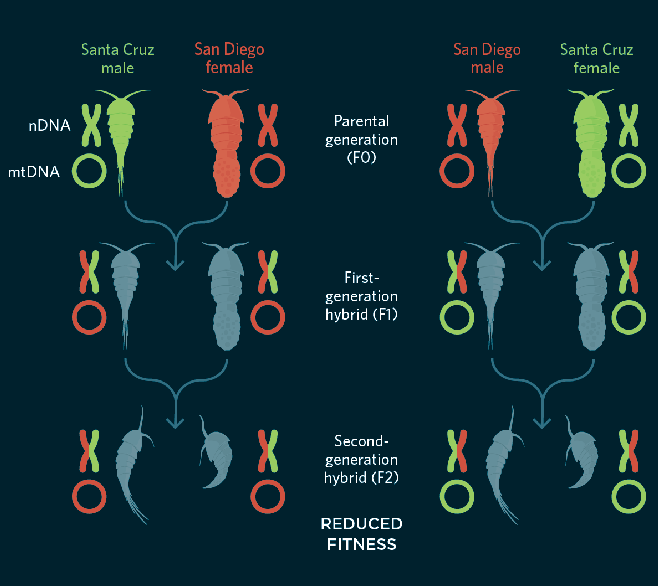
Fitness: Darwin’s version
referred to how well an organism was adapted to its environment, not physical fitness and entirely nontechnical
Fitness: modern version
refers to the end-product: the number of offspring left behind by individuals with a trait or allele(s)
Relative fitness (ω)
a measure of offspring left by a group with one trait relative to that of another
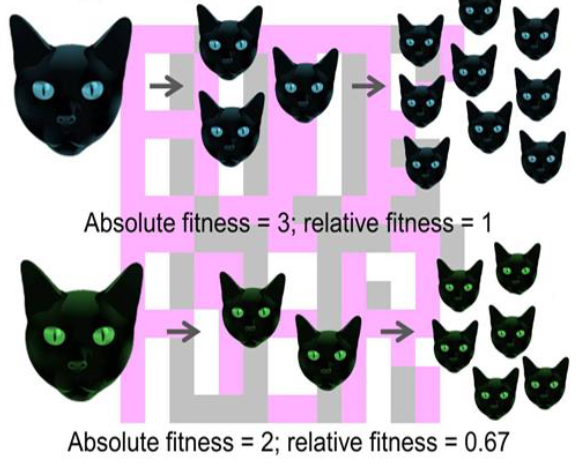
Calculating change in freq. of allele in one generation under weak selection (s < 0.1)
∆p=s×p×(1-p)
∆p = change in frequency of allele p over one generation
s = selection coefficient
p = current frequency of allele p
Selection coefficient (s)
a measure of the relative strength of selection that favors the beneficial allele
When both alleles confer equal fitness, s = 0
When having 1 copy of the allele means 101 offspring compared to 100 without it, s = 0.01
When having 1 copy of the allele means 99 offspring compared to 100 without, s = -0.01

Genetic variation component (p×(1-p))
one allele frequency multiplied by the other; the higher the genetic variation, the faster selection can change the allele frequencies
when p = 0.5, this term reaches its maximum of 0.25
when p approaches 0 or 1, this term approaches 0

Calculating allele freq. in next generation
p’ =∆p + p
p’ = new allele frequency
∆p = change in frequency of allele p over 1 generation
p = current frequency of allele p
Calculating time needed for an allele to spread from freq. of 0.1 to 0.9
4/s generations
s = selection coefficient
What happened to average beak size in G. fortis after a drought?
mean beak depth increased from 9.42 mm to 9.96 mm in G. fortis, so did body size (+4% bigger)
What happened to average beak size in G. fortis after a heavy rain year?
mean beak depth decreased, small beaks better adapted to plentiful small seeds
ALX1 and HMGA2
genes associated with beak shape and size, respectively.

Genetic drift
the change in frequency of an existing gene variant in the population due to random chance; includes founder effect and bottleneck effect. More powerful in small populations because non-representative outcomes are more likely in smaller samples
Sewall Wright
argued that random fluctuations in allele frequencies were an important force in evolutionary change; populations often split into subpopulations. Loved guinea pigs.
Adaptive landscape
Metaphor for describing the evolution of relative fitness in species described by Wright.
Selection pushes populations to the top
Populations won’t go down to go up
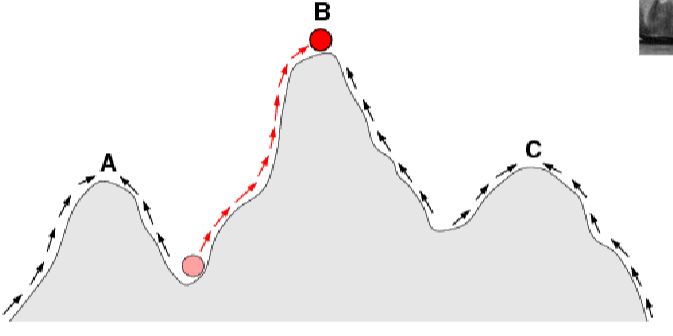
Non-directional fixation
allele frequencies are equally likely to change in either direction due to drift.
Fixation
after enough generations, one allele will reach a frequency of 1.0, fixing it at that frequency.
Calculating genetic drift
Var(p) = (p(1-p))/2Ne
Var(p) = variation in frequency of allele p after one generation
p = current frequency of allele
Ne = effective population size
Next generation frequencies should be added back onto current frequency
Probability of allele extinction
inverse to its frequency, an allele with a freq. of 0.01 has a 99% chance of extinction.
Rarity disadvantage
new allele have a greater change of going extinct, even if they are beneficial
Bottleneck effect
reduction of genetic diversity due to sharp reduction in population size caused by environmental disturbance, like fire, drought, or disease, where no individuals have any survival advantage.
Founder effect
reduction of genetic diversity due to a small number of individuals founding a new isolated population.
Founder effect in the Amish
1 in 14 Amish people carry a recessive allele for an unusual form of dwarfism compared to 1 in 1000 for most populations, due to the population being founded by 200 individuals and remaining reproductively isolated.
AR and PP experiment Drosophila hybridization experiment
California flies homozygous for AR are crossed with Texas flies homozygous for PP, creating heterozygote F1 & F2 individuals. Recreated genetic drift in laboratory by breeding N=4,000 and N=20 populations, showing N=20 population founders had random allele fixations.
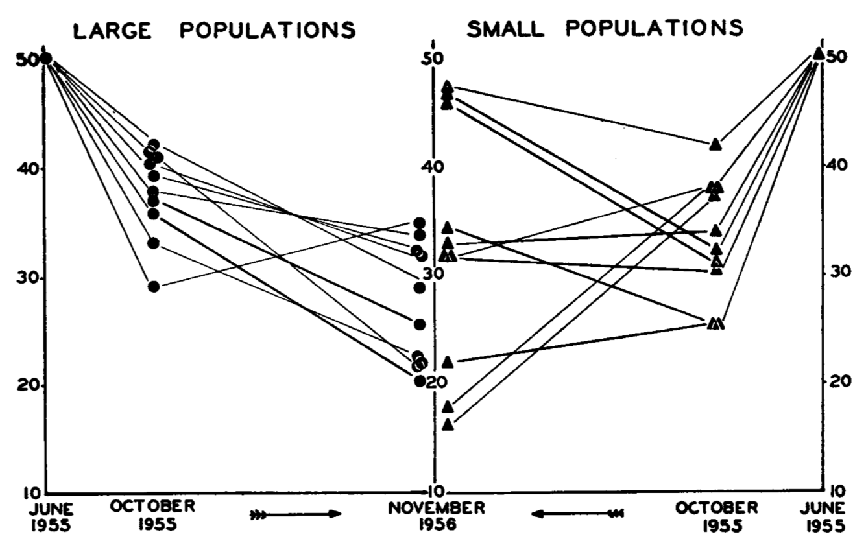
Are selection and genetic drift mutually exclusive?
No! genetic drift occurs with alleles under selection as well as with neutral genetic variants.
Intrasexual selection
battles with other males to access mates, often leading to evolution of weapons
Intersexual selection
seduction of other sex, often leading to evolution of beauty
Pathways for inter- and intrasexual selection
Inter: competition for mates → no defensible resource OR defensible resource without 1 on 1 battles
Intra: competition for males → defensible resource → 1 on 1 battles
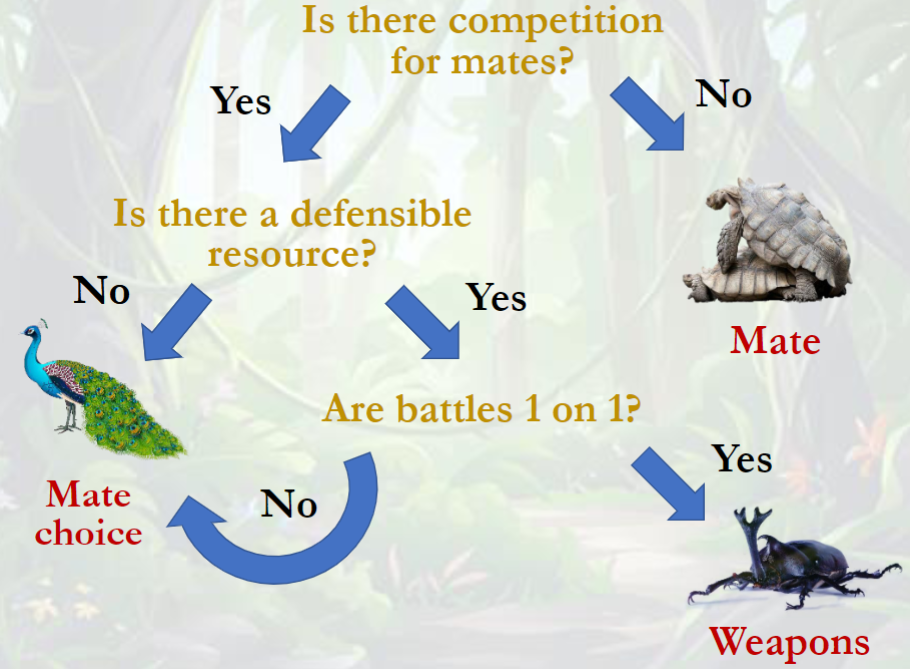
Widowbirds study
Artificially shorted and lengthened tails onto widowbirds, with unmanipulated and glued tail groups for controls. Artificially lengthened tails resulted in greater sexual success
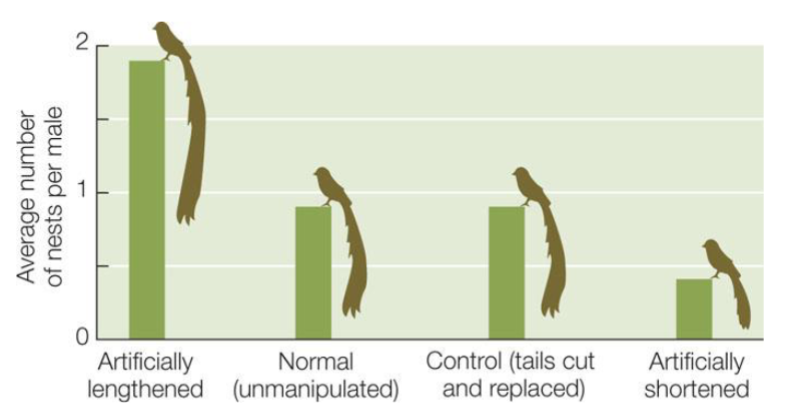
Why do females choose mates?
females have greater parental investment, are receptive to sex for fewer days a year
The good genes/parent hypothesis
females choose males based on utilitarian benefits that will accrue to the mother. Direct benefits (father with abundant resources) or indirect benefit (father who will give offspring a genetic advantage).
Aesthetic choice hypothesis
females choose beautiful males for no other reason than that beautiful males are beautiful.
Fisherian runaway
mathematical argument by RA Fisher for the aesthetic choice hypothesis, where survival advantage and female choice must be balanced and neither can be maximized.
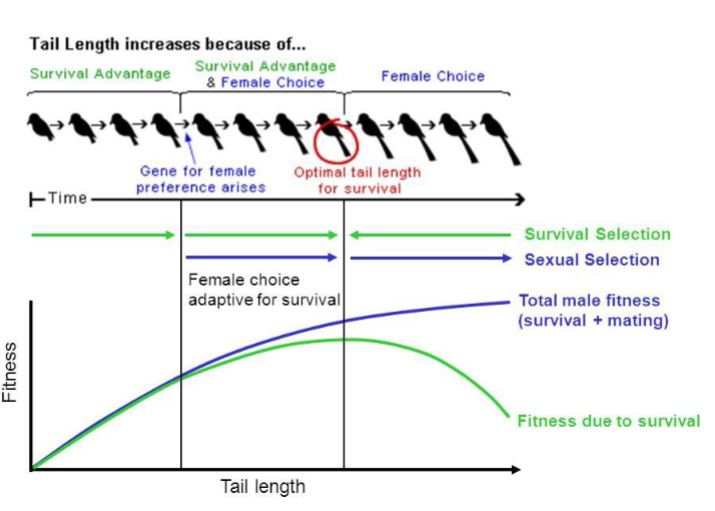
Tungara frog
Female tungara frogs are 5x likely to choose a male whose call includes chucks and whines; larger frogs produce deeper chucks and also have higher reproductive ability.
Sensory exploitation hypothesis
females choose males based on features that stimulate the female’s sensory system; females evolve preferences for reasons unrelated to sex (ex. color of a common food source) and males exploit those preferences